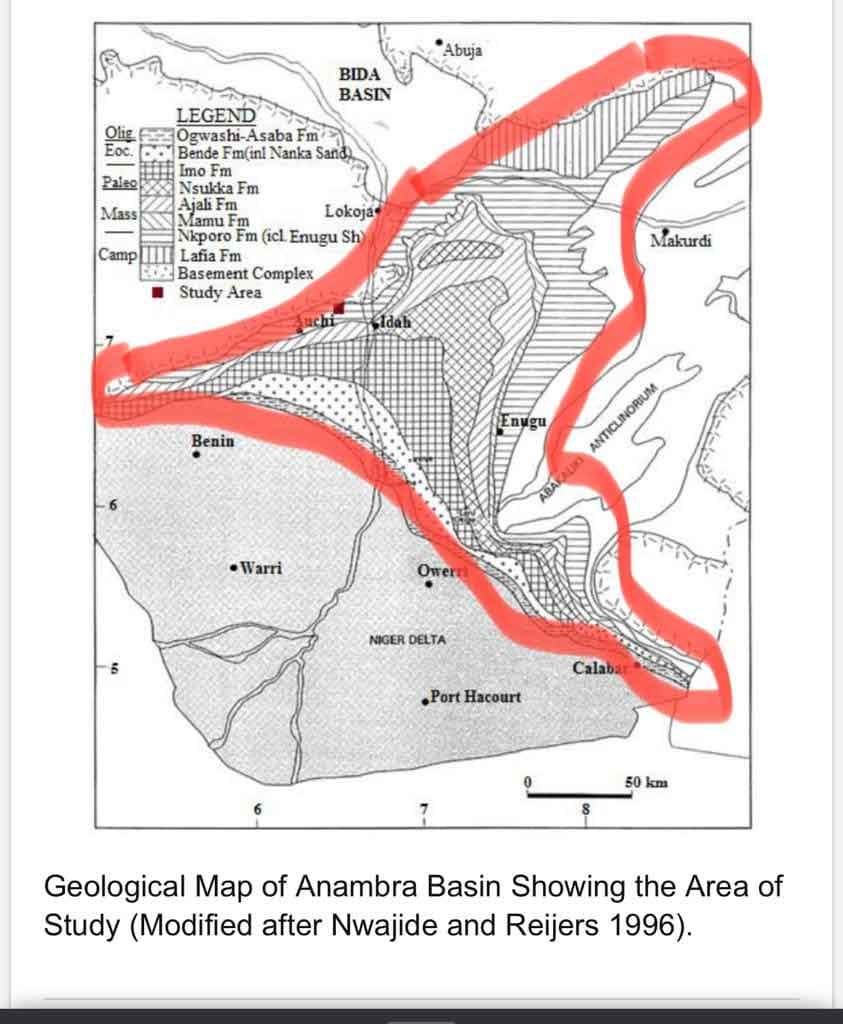Since the morning of Wednesday 25th May, 2022 when management of Caritas University Amorji-Nike near Emene in Enugu East Local Government Area of Enugu state and the authorities of Enugu Capital Territory Development Authority (ECTDA) released a joint statement bringing to the notice of Nigerians an incident of an ‘inexplicable’ fire outbreak that till date has defied all attempts to put it out, speculations are rife with different assumptions as to the possible cause(s) of the fire with most people concluding it has to be gas flaring.
The fire incident which allegedly started as a result of borehole drilling by the institution prompted the authorities of ECTDA through its chairman Dr Josef Onoh to announce its decision to embark on door-to-door search to ascertain operators of unauthorized boreholes in the state.
According to him, the ECTDA together with the state Ministry of Environment will embark on intelligent clampdown on all illegal boreholes especially along the Oil and Gas pipeline that runs through the state so as to prevent such fire disasters in the future in the state.
Even though experts opined that the fire is as a result of Natural Gas Combustion from 1200 feet gas trapped underground that contains butane and propane, In its quest to get a more informed and broader explanation on the possible cause(s) of the fire, LEKKI TIMES sought the opinions of 2 oil and gas experts Sir Ogochukwu Azike, a Senior Production Geologist and Engr.Lazson Nchekwube A Lead Reservoir Engineer both of Heritage Energy a oil and gas firm.

According to Sir Azike, The fire explosion at Caritas University resulting from the water borehole drilling activity at about 1000 ft below mean sea level is likely a coal bed methane (coal gas) unless there is a fault or a pathway for gas migration from deeper hydrocarbon-bearing reservoirs.
Sir Azike went on to state that the geology/stratigraphy of Enugu state has coal seam deposits in some locations. This could be Methane gas which is often found in association with coal deposits.
These deposits might be virgin coal seams (coal seam methane/coal bed methane). That can be mined, produced or abandoned depending on the economics. Gas from each of these may be suitable for the production of power.
In the USA, Coal Bed Methane (CBM) is explored and produced in some areas. In addition, based on Azike’s study and having worked in Anambra Basin, the basin has hydrocarbon potential. Anar-1 Well was re-entered during President Goodluck Jonathan administration and produced oil over a period of time. The oil is of good quality high API gravity. The hydrocarbon-bearing reservoirs within the basin are more gas prone. For example, Alo field has billions cubic feet of gas reserves. The basin is under-explored and has a future opportunity for further appraisal and development.
Engr Nchekwube Lazson, added that this phenomenon before fire always starts as a wide wind coming out of the drill hole (a Kick) pushing their drilling equipment out of the hole due to high pressure in the formation. The gas in the formation is trying to escape from the high-pressured zone to the surface. He advised that what the driller should have done upon noticing that was to increase their mud weight with Barite circulation inside the hole. He further opined that the water drilling company had issues in pumping Barite slurries as their usual water pump will find it difficult.

On the successful pulling of the drill bit and make-up pipes out of hole, he said they should have looked for a triplex pump mud which will assist them in pumping Cement slurry with other additives to plug off the hole and properly abandon the well.
Engr Nchekwube appeals to Nigeria Upstream Regulatory Commission (Formerly DPR), Ministry of Environment and other relevant agencies to properly regulate every drilling activity in the Anambra Basin.
He noted that similar event happened in Chevron North Apoi Gas Rig on 16th January 2012 and lasted for 46 days and claimed 5 lives out of the 154 people working on the rig.
According to him, subsequently what drillers should do is to look for Barite mixed with water and continuously pour it into the hole. In the case of the Enugu incident the challenge the drillers had according to Engr. Lazson is that their pump might not have the capacity to do that. They would have needed a pump with capability of pumping cement slurry and Barite slurry (high density fluid).

So while the public (majority of whom are south-easterners are already basking in the euphoria of the prospect of discovery of a huge gas deposit in their domain thereby qualifying them to be listed amongst oil (gas) producing states) may want to tarry until findings are rounded off before they begin the celebrations.
Don’t forget to also check out this story on Lekki Times









